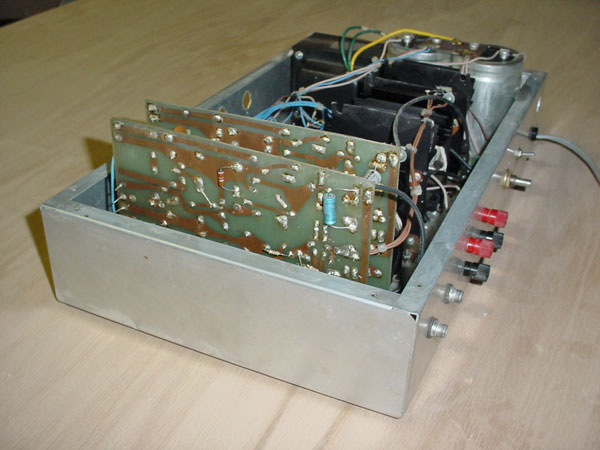Podcast 42: Nelson Pass
 Nelson Pass, founder of Pass Labs and legendary do-it-yourself guru, reveals how he got into electronics and discusses his work at ESS with Oskar Heil, co-founding Threshold Electronics, his new venture called First Watt, various DIY amplifier and speaker projects, the importance of the DIY community, the operation of various types of transistors (including the new static-induction transistors), and answers to chat-room questions.
Nelson Pass, founder of Pass Labs and legendary do-it-yourself guru, reveals how he got into electronics and discusses his work at ESS with Oskar Heil, co-founding Threshold Electronics, his new venture called First Watt, various DIY amplifier and speaker projects, the importance of the DIY community, the operation of various types of transistors (including the new static-induction transistors), and answers to chat-room questions.
Pass was born in Massachusetts in 1951 and grew up in northern California. He received a degree in physics from UC Davis while working for ESS, a speaker maker known for the Heil Air Motion Transformer. He co-founded Threshold Corporation and served as its president from 1975 to 1991, at which time he founded Pass Laboratories, where he remains today.
Pass holds seven audio patents, six of which are power amplifier circuits. Since the mid 1970s, he has helped popularize solid-state Class A power amplifiers, both single-ended and push-pull, with an emphasis on simple elegant topologies.
He has a wife, two children in college, two horses, a cat, dog, five Vietnamese pigs, two newts, and numerous goldfish, frogs, and squirrels along with visiting raccoons, deer, bears, skunks, possums, foxes, and the occasional mountain lion. He drinks strong French roast, purified water, Bordeaux, and cabernet.
Run Time: 59.30
Click here to listen to this podcast.

This is the first power amp designed from scratch by Nelson Pass. It wasn't pretty, but it worked quite well.

A DIY subwoofer called El Pipe.

This DIY speaker, dubbed J Low, uses a single 4-inch full-range driver with horn loading to increase the bass response.

The super-simple Zen amp uses a single transistor to amplify the signal and light bulbs as resistors in the circuit.

Pass is now designing power amps based on the new SIT (static-induction transistor), a variation of the JFET (junction field-effect transistor) and MOSFET (metal-oxide semiconductor field-effect transistor) fabricated from silicon carbide. Originally developed for radar applications, the SIT turns out to be ideal for audio amplification, providing the closest thing to triode-tube characteristics without the vacuum.
- Log in or register to post comments




















































